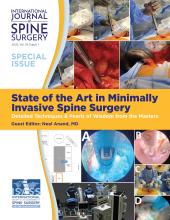ABSTRACT
Background The quality of the vertebral body structures such as endplate, cortex, and trabecular bone is important for understanding the performance of implants, particularly at the bone-implant interface. Although vertebral body structures have been analyzed separately in the literature, there is no comprehensive study to assess these anatomical measurements along with their interrelationships in the lumbar spine. Therefore, the purpose of this study was to assess variations in trabecular microstructure, vertebral endplate thickness and concavity, and vertebral body cortex thickness within the lumbar spine.
Methods A total of 80 lumbar vertebrae (L1-L5) were dissected from 16 human cadaver specimens and imaged with microcomputed tomography to determine trabecular microstructure, vertebral cortex thickness, endplate thickness, and maximum endplate concavity depth. A paired t test and regression analysis were used to determine significant differences (P < .05) between different vertebral levels and correlations between the analyzed anatomical parameters.
Results L1 vertebra had significantly better (P < .02) trabecular bone microstructure (eg, trabecular bone volume fraction) than all other lumbar vertebrae. However, L1 vertebra also had significantly thinner (P ≤ .02) anterior, left, and right cortices compared to all other vertebral levels. Within L3-L5 intervertebral disc spaces, cranial endplates had significantly greater (P ≤ .03) thickness and maximum concavity depth compared to their respective caudal endplates. No strong correlations were observed between trabecular bone microstructure, maximum endplate concavity depth, vertebral cortex, and endplate thickness parameters.
Conclusions Detailed reference data of these anatomical parameters for each lumbar vertebral body can aid in improved understanding of bone quality, particularly when assessing different implant designs and fixation approaches. Moreover, such anatomical knowledge may help clinicians with optimal implant design selection and surgical placement of these devices into their respective locations.
- endplate concavity depth
- trabecular bone microstructure
- vertebral cortex thickness
- endplate thickness
- lumbar spine
- anatomy
Footnotes
Disclosures and COI: The authors report no conflict of interest concerning the materials or methods used in this study or the findings specified in this article.
- ©International Society for the Advancement of Spine Surgery







